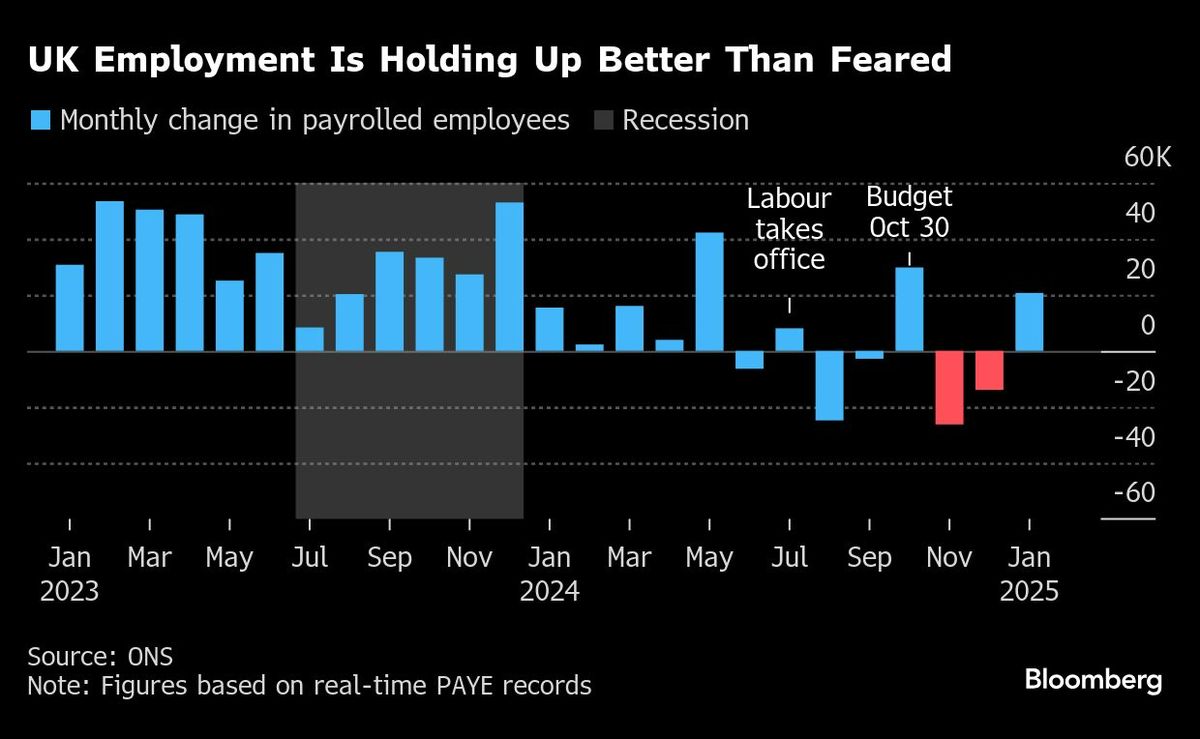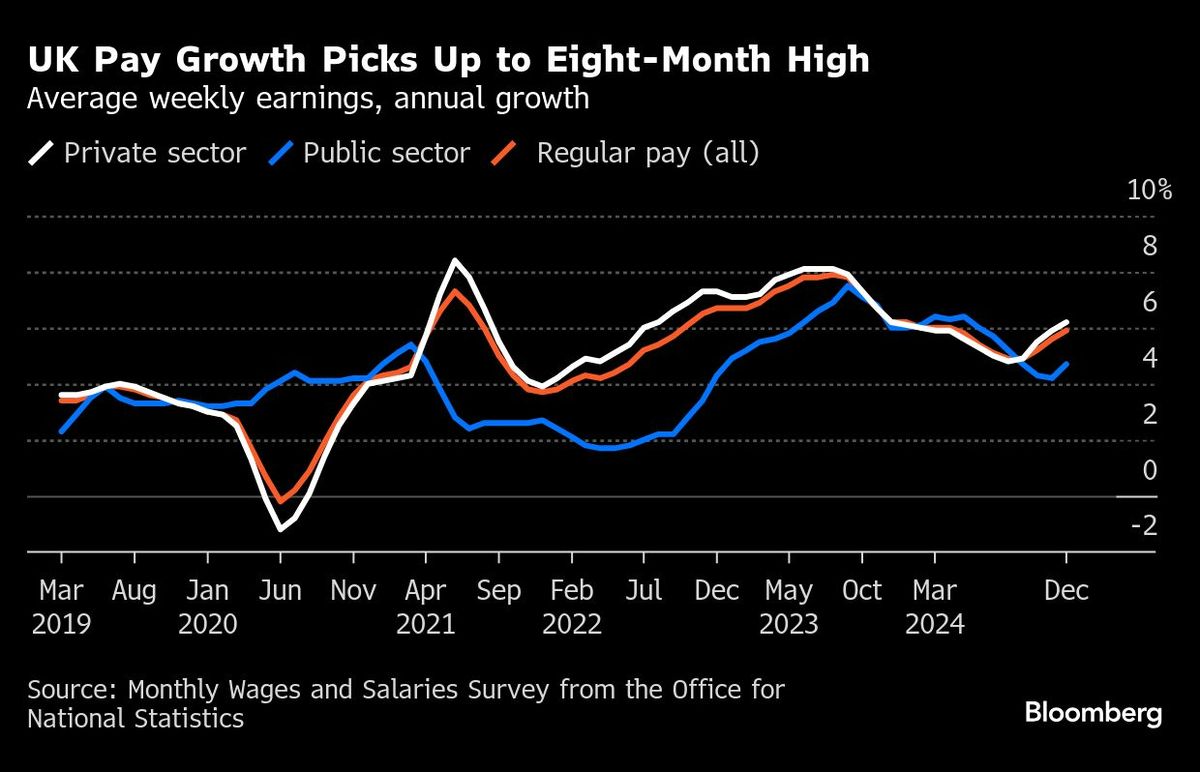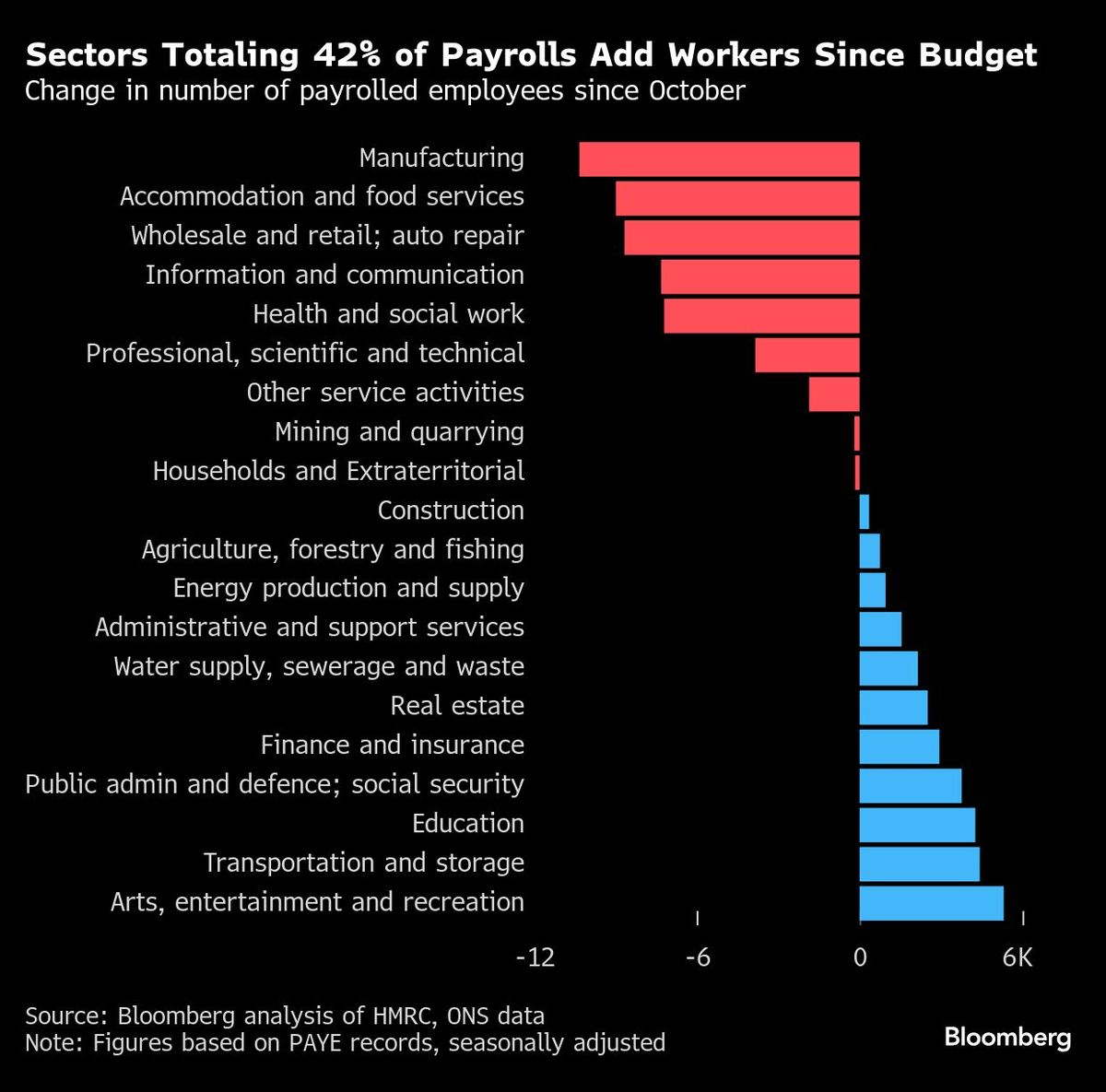
(Feb 18): UK pay growth picked up to its highest level in eight months and employment unexpectedly rose, as the jobs market appeared resilient to the Labour government’s upcoming £26 billion (US$32.8 billion or RM145.52 billion) increase in payroll taxes.
Wages excluding bonuses jumped 5.9% in the final quarter of 2024 from a year earlier, up sharply from a 5.6% rise previously, the Office for National Statistics said Tuesday. It was in line with economists’ expectations. Private sector pay growth picked up to 6.2%.
There were also more signs that the jobs market is holding up better than feared after the surge in employment costs in the Labour government’s first budget.
The number of payrolled employees rose 21,000 in January and is now down less than 20,000 since Chancellor of the Exchequer Rachel Reeves increased national insurance contributions on Oct 30 and announced another big hike in the minimum wage, both of which will come into effect in April.
Economists had expected payrolls to drop 30,000 for January. December was also revised, with the 14,000 decline far smaller than the 47,000 originally reported. Unemployment held at 4.4% in the fourth quarter, and vacancies rose slightly in the three months through January from the period to December.
Traders trimmed expectations for BOE cuts in the wake of the data, and now see 55 basis points of reductions, down from 57 basis points on Monday. Meanwhile the pound initially pared losses, before trading 0.2% lower at US$1.2596.
The figures are likely to entrench caution among officials at the BOE trying to balance Britain’s sluggish growth against sticky price pressures and a resilient labour market. Rate-setters reduced interest rates earlier this month to support a stagnating economy, though they warned of a “gradual and careful” approach to further easing.
The labour data come just a day before figures that are expected to show that inflation climbed to 2.8% in January, the highest in 10 months.
Speaking at an event hosted by Bruegel, a Brussels-based think tank, BOE Governor Andrew Bailey said Tuesday there was nothing in the labour data to challenge reports from BOE agents that wage settlements are slowing.
Labour market quantities — employment, unemployment and inactivity — were “not far out of line with what we were expecting” and pay growth was slightly weaker, he said. The BOE had forecast 6.3% for regular private-sector wage growth in the fourth quarter. Bailey played down the expected pickup in inflation, saying it is “not telling us a story about the fundamental state of the economy” as growth is “weak” and prices are being driven by administered costs such as energy bills.
Business surveys have pointed to job cuts on a scale akin to the financial crisis in the wake of the budget. However, official data is yet to show a marked deterioration in the labour market, with early redundancies data also showing a wave of job cuts failing to materalise.
The number of reported redundancies picked up slightly in the last quarter, to 3.9 per thousand employees, but are still down year-on-year, the ONS said.
“The further rise in pay growth, combined with signs of a gradual easing in employment rather than a collapse, will keep the Bank of England on its ‘gradual and careful’ rate cutting path,” said Thomas Pugh, economist at RSM UK.
Household finances also continued to be bolstered by wage growth outstripping inflation. Real pay growth was at 3.4% in the fourth quarter, the fastest pace since the summer of 2021. Separate real-time figures showed seasonally-adjusted median pay rose slightly in January.
The central bank sees how businesses react to the increase in emploment costs as crucial for monetary policy. Firms could either pass the costs back to consumers, further stoking already resurgent inflationary pressures. Alternatively, businesses could reduce wage growth and make job cuts, stemming price pressures from the labour market.
The BOE expects firms to spread the pain through multiple channels, though it said at the February meeting that it now expects a slightly larger impact on prices in the near term.
Business surveys for pay growth in 2025 point to it easing slightly to around 4%, levels officials still see as too high to keep inflation at the 2% target on a sustainable basis.
The ONS said that employment was up 107,000 in the fourth quarter, compared to the previous quarter, well above expectations. However, policymakers are wary over the data after a plunge in survey responses prompted concerns over the accuracy of official estimates for unemployment, employment and economic inactivity.
The ONS is rushing to create a new survey to better gauge the tightness of the jobs market, though it has warned that a full transition may take until 2027.
Uploaded by Chng Shear Lane
- Gas pipeline blaze: Petronas Gas, Gas Malaysia’s shares open marginally lower after trading halt
- Gas pipeline blaze: MIDF flags potential RM18m impact to Petronas Gas
- T7 Global drops to two-year low, triggers short-selling halt after deputy chairman's departure
- Digital banks in Malaysia urged to re-examine strategies to better serve B40 segment
- Police to look into allegations that digging caused gas pipeline fire
- India’s Kotak targets US$2b for new private credit fund
- Trump’s bid to weaken China’s maritime heft may take ‘decades’
- China’s efforts to curb solar glut show limited impact — CEA
- Actor Val Kilmer, star of 'Top Gun' and 'Batman Forever', dies at 65 — report
- How Spain became big pharma’s new hotspot in Europe



